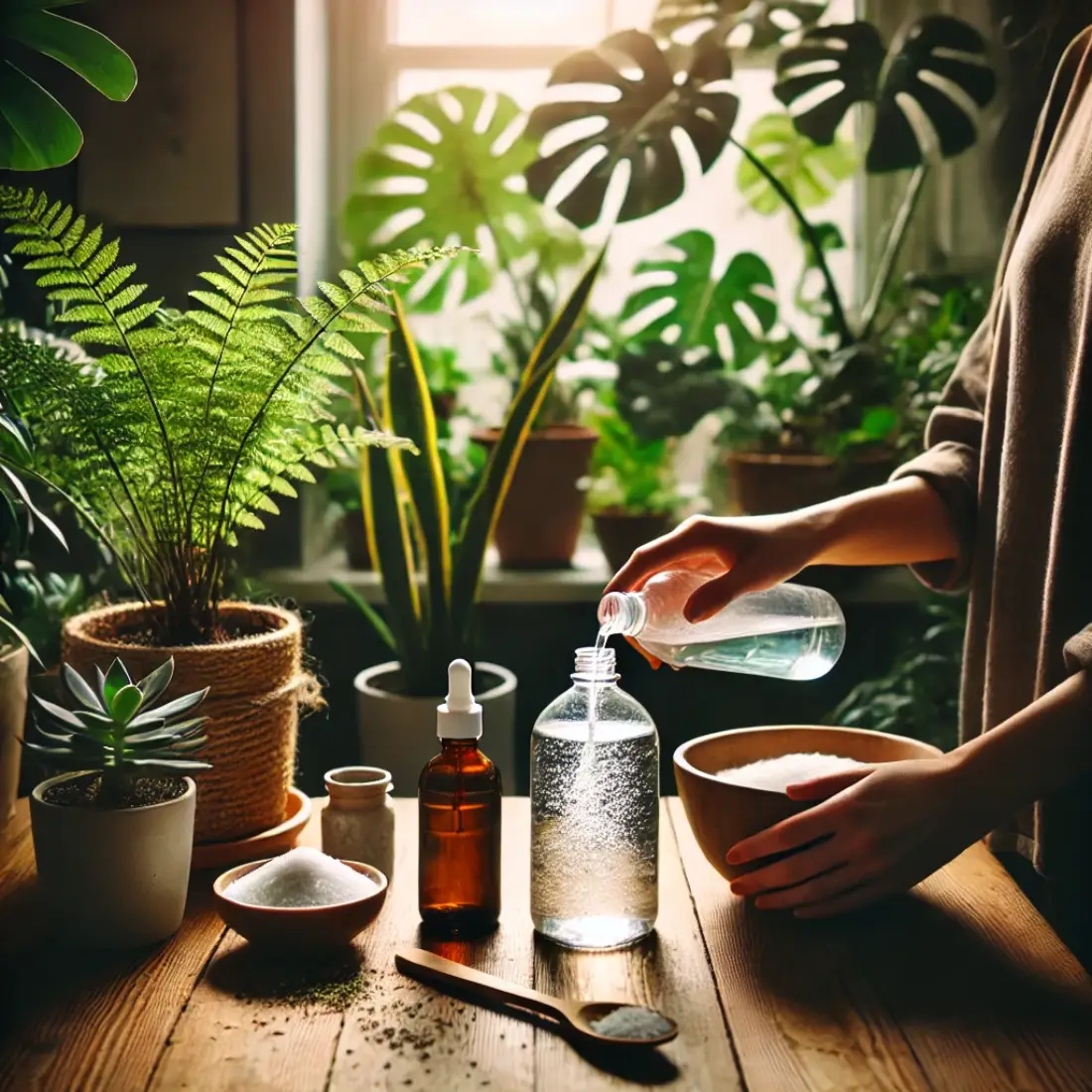The Parlor Palm (Chamaedorea elegans) is a popular indoor plant known for its elegant, feathery fronds and ability to thrive in low light conditions. Originating from the rainforests of Central America, this versatile plant has been a favorite in homes and offices for over a century.
It’s prized not only for its aesthetic appeal but also for its low-maintenance nature, making it ideal for both novice and experienced plant owners. Whether placed in a corner or as a focal point, the Parlor Palm adds a touch of greenery and life to any indoor space.
- The Parlor Palm is a low-maintenance indoor plant perfect for beginners.
- It thrives in low to moderate light, making it suitable for various indoor settings.
- Proper watering is crucial; keep the soil slightly moist but avoid overwatering to prevent root rot.
- It prefers higher humidity levels, which can be achieved with a humidifier or by placing the plant on a pebble tray.
- Regularly clean the leaves to remove dust and allow the plant to breathe.
- Fertilize sparingly, about once every 2-3 months during the growing season, using a balanced, organic fertilizer.
Optimal Growing Conditions
The Parlor Palm flourishes in low to moderate light, making it ideal for indoor environments. It prefers temperatures between 65-80°F (18-27°C) and should be kept away from cold drafts or direct sunlight, which can scorch its leaves.
Humidity is crucial, aim for 40-60% humidity levels, using a humidifier or placing the plant on a pebble tray if needed. Use well-draining soil to prevent waterlogging, and water moderately, allowing the top inch of soil to dry out between waterings. These conditions ensure your Parlor Palm remains healthy and vibrant.
Watering Guidelines
Water your Parlor Palm when the top inch of soil feels dry, usually once a week during the growing season and less frequently in winter. Use room-temperature water and ensure the pot has drainage holes to prevent root rot.
Avoid letting the plant sit in standing water. It’s best to water thoroughly, allowing excess water to drain out, and then discard any water collected in the saucer. Overwatering is a common issue, so it’s crucial to monitor soil moisture and adjust watering frequency based on the plant’s needs and the season.
Soil and Potting Requirements
The Parlor Palm thrives in well-draining, rich, organic soil. A standard potting mix with added peat moss or perlite is ideal, providing the right balance of moisture retention and aeration. Choose a pot with drainage holes to prevent water accumulation, which can lead to root rot.
When potting or repotting, ensure the pot size allows room for growth without being overly large, as this can retain excess moisture. Repotting is generally needed every 2-3 years or when the plant becomes root-bound. Proper soil and potting practices are essential for maintaining a healthy Parlor Palm.
Organic Fertilizers
Organic fertilizers are an excellent choice for the Parlor Palm, providing essential nutrients while supporting soil health. Use a balanced, water-soluble organic fertilizer, such as compost tea, worm castings, or seaweed extract, diluted to half strength. Apply it every 2-3 months during the growing season (spring and summer).
Organic options enrich the soil, promoting strong root development and vibrant foliage without the risk of chemical buildup. Avoid over-fertilization, which can cause leaf burn. Always water the plant before applying fertilizer to prevent root damage.
Pruning and Maintenance Tips
Regular pruning and maintenance are key to keeping your Parlor Palm healthy and attractive. Remove yellowing or dead fronds at the base using clean, sharp scissors to encourage new growth and maintain a tidy appearance. Dust the leaves periodically with a damp cloth to keep them clean and allow for better light absorption.
Avoid trimming healthy green fronds, as this can slow growth. Inspect the plant regularly for pests and address any issues promptly. Minimal pruning is needed, but regular care ensures your Parlor Palm remains lush and vibrant.
Propagation of Parlor Palm
Propagating the Parlor Palm is typically done through seed germination or division. While seed propagation is slow and requires patience, division is a quicker method. To propagate by division, carefully remove the plant from its pot and gently separate a cluster of stems with roots attached.
Replant the division in a small pot with fresh, well-draining soil, and water lightly. Keep the new plant in a warm, humid environment away from direct sunlight until established. Regular care and monitoring will help ensure successful propagation, allowing you to grow additional Parlor Palms from your existing plant.
Common Problems and Solutions
Growing a Parlor Palm can come with some common issues, but they’re usually easy to solve with the right care.
1. Yellowing Leaves: Often a sign of overwatering or poor drainage. Ensure the pot has drainage holes, reduce watering frequency, and let the soil dry slightly between waterings. Also, avoid cold drafts, which can stress the plant.
2. Brown Leaf Tips: This is usually caused by low humidity, underwatering, or exposure to direct sunlight. Increase humidity by misting the plant, using a humidifier, or placing it on a pebble tray. Make sure to water regularly but avoid soggy soil. Keep the plant away from harsh sunlight.
3. Pests: Parlor Palms are susceptible to pests like spider mites, mealybugs, and scale. Inspect the plant regularly, especially the undersides of leaves. Treat infestations with insecticidal soap, neem oil, or by wiping the leaves with a mixture of water and mild soap. For severe infestations, consider using a systemic insecticide.
4. Slow Growth: This could be due to low light, lack of nutrients, or being root-bound. Ensure your palm gets enough indirect light and feed it with a balanced organic fertilizer during the growing season. If the roots are tightly packed, consider repotting into a slightly larger container.
FAQs About Parlor Palm
How often should I water my Parlor Palm?
Water your Parlor Palm when the top inch of soil feels dry, typically once a week during the growing season and less frequently in winter.
Can Parlor Palm grow in low light?
Yes, Parlor Palm thrives in low to moderate light conditions, making it an excellent choice for indoor spaces with limited natural light.
Why are the tips of my Parlor Palm turning brown?
Brown tips can be caused by low humidity, underwatering, or exposure to direct sunlight. Increase humidity, water regularly, and keep the plant out of direct sun.
How do I repot my Parlor Palm?
Repot your Parlor Palm every 2-3 years or when it becomes root-bound. Choose a slightly larger pot with drainage holes, and use well-draining soil.
Is Parlor Palm safe for pets?
Yes, Parlor Palm is non-toxic to cats and dogs, making it a pet-friendly houseplant.
How can I increase humidity for my Parlor Palm?
You can increase humidity by misting the plant, using a humidifier, or placing the pot on a tray filled with water and pebbles.
What type of fertilizer should I use for Parlor Palm?
Use a balanced, water-soluble organic fertilizer, applied every 2-3 months during the growing season. Avoid over-fertilizing to prevent leaf burn.
How do I propagate a Parlor Palm?
Parlor Palms are typically propagated by division. Carefully separate a cluster of stems with roots from the main plant and replant it in fresh soil.
What should I do if my Parlor Palm gets pests?
Treat pests like spider mites, mealybugs, and scale with insecticidal soap, neem oil, or a mixture of water and mild soap. Regularly inspect the plant for early signs of infestation.
Can I place my Parlor Palm outside?
Parlor Palms can be placed outside in shaded areas during warm months but should be brought indoors before temperatures drop below 50°F (10°C).










